



Melanin
For a long time, human beings have studied melanin from scientists to socially conscious activists. We live in a new era of time during this 21st century. Therefore, it is perfectly time for more individuals to comprehend how beautiful and complex melanin is. Melanin doesn’t just exist among humans alone. It exists among other organisms, so it’s a natural part of Nature. Melanin is certainly part of my life, because of the obvious reason (as I am a human and I am a black American). It is also important to never produce hyperbole or unfounded conclusions as it relates to melanin. In other words, we can discover the greatness of melanin without presenting erroneous claims. To be precisely clear, melanin is a group of natural pigments found in organisms. Melanin is created by the oxidation of the amino acid tyrosine followed by polymerization. Oxidation is the loss of electrons during a reaction by a molecule, atom, or ion. Oxidation happens when the oxidation state of a molecule, atom, or ion is increased.
Polymerization is when reacting monomer molecules come together in a chemical reaction to form polymer chain or three-dimension networks. It is a process that converts a monomer (or a molecule that as a unit can bind chemically or supramolecular to other molecules to form a supramolecular polymer) or a mixture of monomers into a polymer. For example, the monomers of amino acids can transform into proteins (or polypeptides). Another example is how monomers like monosaccharides can transform into carbohydrates (or styrene monomer can form a polystyrene product). For humans, the three basic types of melanin are eumelanin, pheomelanin, and nueromelanin. Melanin is a part of the human experience as we recognize the intrinsic value of humanity in the four corners of the Earth.

Characteristics
Melanin has many characteristics. For human beings, it is the main determinant of skin color. It is found on hairs too. It is found in the pigmented tissue underlying the iris of the eye, and the stria vascularis of the inner ear. Even in the human brain, there are tissues with melanin found in the medulla and the pigment bearing neurons within areas of the brain-stem (as found in the locus coeruleus and the substantia nigra). Melanin occurs in the zona reticularis of the adrenal gland. The melanin in the human skin is formed by the melanocytes. Melancoytes are found in the basal layer of the epidermis. In general, human begins have a similar concentration of melanocytes in their skin, the melanocytes in some individuals and ethnic groups produce variable amounts of melanin. Some humans have very little or no melanin synthesis in their bodies. This is called albinism. Albinism is found in every ethnic group worldwide. Since melanin is an aggregate of smaller component molecules, there are many different types of melanin with differing proportions and bonding patterns of these component molecules. Both pheomelnain and eumelanin are found in the human skin and hair. Yet, eumlanin is the most abundant melanin in humans as well as the form most likely to be deficient in albinism.
Eumelanin polymers have long been thought to comprise of numerous cross-linked 5,6-dihydroxyindole (DHI) and 5,6-dihydroxyindole-2-carboxylic acid (DHICA) polymers. The two types of eumelanin are brown eumelanin and black eumelanin. They chemically differ from each other in their pattern of polymeric bonds. There is a small amount of black eumelanin in the absence of other pigments causes gray hair. A small amount of eumelnanin in the absence of other pigments causes blond color hair. As the body ages, it continues to produce black melanin but stops producing the brown version, explaining the grey hair common in the elderly.
Pheolemanins or Phaeomelanins impart a pink to red hue. That depends on the concentration. Pheomelanins are found greatly in the lips, nipples, and in the glands of the human private areas. When a small amount of brown eumelanin in hair, which would otherwise cause blond hair, is mixed with red pheomelanin, the result is strawberry blonde. Pheomelnain is also present in the skin, and redheads consequently often have a more pinkish hue to their skin as well. In chemical terms, pheomelanins differ from eumelanins in that the oligomer structure incorporates benzothiazine and benzothiazole units that are produced, instead of DHI and DHICA, when the amino acid L-cysteine is present. Trichochromes (formerly called trichosiderins) are pigments produced from the same metabolic pathway as the eumelanins and pheomelanins, but unlike those molecules they have low molecular weight. They occur in some red human hair.
Neuromelanin or NM is a dark insoluble polymer pigment produced in specific populations of catecholamingeric neurons in the brain. Humans have the largest amount of NB, which is present in lesser amounts in other primates, and totally absent in many other species. However, the biogolical function remains unknown, although human NM has been shown to efficiently bind transition metals such as iron, as well as other potentially toxic molecules. Therefore, it may play curcuial roles in apoptosis and related Parkinson’s disease.
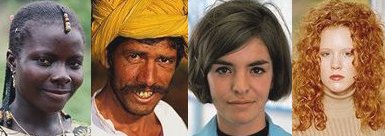
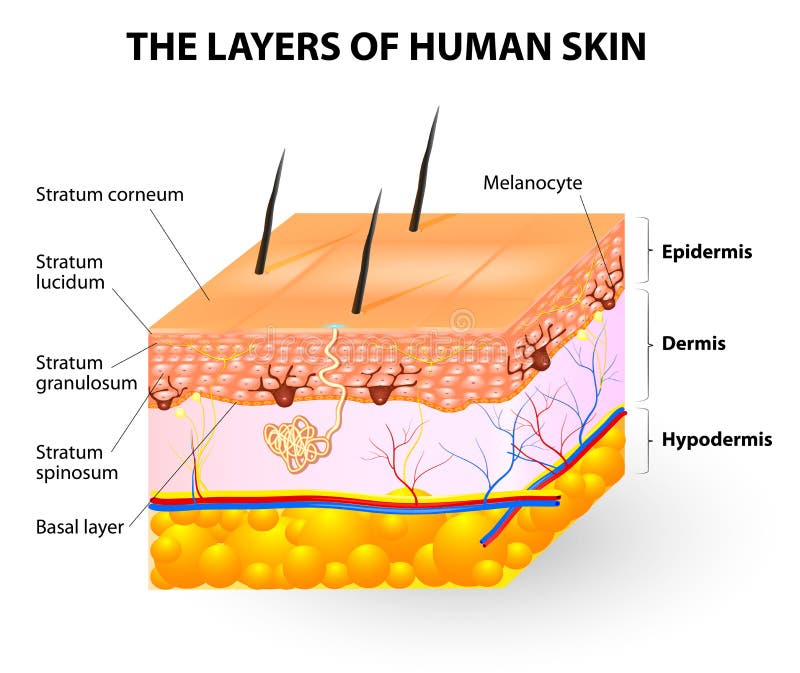
Human Adaptation
Early humans always had dark skin. Dark skin existed as an adaptation to protect human beings from the effects of UV radiation. Anatomically modern humans existed in Africa between 200,000 and 100,000 years ago. They populated the rest of the world after migrations between 80,000 and 50,000 years ago. Back then, there were Neanderthals, Denisovans, and other non-homo sapiens sapiens species too. As the original humans from Africa migrated and settled in areas like Asia and Europe, the selective pressure for eumelanin production decreased in climates where radiation from the sun was less intense. This caused the diverse range of human skin color. Of the two common gene variants known to be associated with pale human skin, Mc1r does not appear to have undergone positive selection, while SLC24A5 has undergone positive selection. As humans migrated northward, those with light skin migrated toward the equator to acclimatize to much stronger solar radiation. Most people's skin darkens when exposed to UV light.
Dark-skinned people, who produce more skin-protecting eumelanin, have a greater protection against sunburn and the development of melanoma, a potentially deadly form of skin cancer, as well as other health problems related to exposure to strong solar radiation, including the photodegradation of certain vitamins such as riboflavins, carotenoids, tocopherol, and folate. Melanin in the eyes, in the iris and choroid, helps protect them from ultraviolet and high-frequency visible light; people with gray, blue, and green eyes are more at risk for sun-related eye problems. Further, the ocular lens yellows with age, providing added protection. However, the lens also becomes more rigid with age, losing most of its accommodation — the ability to change shape to focus from far to near — a detriment due probably to protein crosslinking caused by UV exposure.
Melanocytes insert granules of melanin into specialized cellular vesicles called melanosomes. These are then transferred into the keratinocyte cells of the human epidermis. The melanosomes in each recipient cell accumulate atop the cell nucleus, where they protect the nuclear DNA from mutations caused by the ionizing radiation of the sun's ultraviolet rays. In general, people whose ancestors lived for long periods in the regions of the globe near the equator have larger quantities of eumelanin in their skins. This makes their skins brown or black and protects them against high levels of exposure to the sun, which more frequently result in melanomas in lighter-skinned people.
With humans, exposure to sunlight stimulates the skin to produce vitamin D. Because high levels of cutaneous melanin act as a natural sun screen, dark skin can be a risk factor for vitamin D deficiency in regions of the Earth known as cool temperate zones, i.e., above 36 degrees latitude in the Northern hemisphere and below 36 degrees in the Southern hemisphere. As a result of this, health authorities in Canada and the USA have issued recommendations for people with darker complexions (including people of southern European descent) to consume between 1000–2000 IU (International Units) of vitamin D, daily, autumn through spring.

Studies on Melanin
Recent research suggests that melanin may serve a protective role other than photoprotection. Melanin is able to effectively ligate metal ions through its carboxylate and phenolic hydroxyl groups, in many cases much more efficiently than the powerful chelating ligand ethylenediaminetetraacetate (EDTA). Thus, it may serve to sequester potentially toxic metal ions, protecting the rest of the cell. This hypothesis is supported by the fact that the loss of neuromelanin observed in Parkinson's disease is accompanied by an increase in iron levels in the brain.
There are about nine different types of oculocutaneous albinism, which is mostly an autosomal recessive disorder. Certain ethnicities have higher incidencies of different forms. For example, the most common type or oculocutaneous albinism type 2 (OCA2), is especially frequent among people of black African descent. It is an autosomal recessive disorder characterized by a congenital reduction or absence of melanin pigment in the skin, hair, and eyes. The estimated frequency of OCA2 among African-Americans is 1 in 10,000, which contrasts with a frequency of 1 in 36,000 in white Americans. In some African nations, the frequency of the disorder is even higher, ranging from 1 in 2,000 to 1 in 5,000. Another form of Albinism, the "yellow oculocutaneous albinism", appears to be more prevalent among the Amish, who are of primarily Swiss and German ancestry. People with this IB variant of the disorder commonly have white hair and skin at birth, but rapidly develop normal skin pigmentation in infancy. Ocular albinism affects not only eye pigmentation but visual acuity, as well. People with albinism typically test poorly, within the 20/60 to 20/400 range. In addition, two forms of albinism, with approximately 1 in 2700 most prevalent among people of Puerto Rican origin, are associated with mortality beyond melanoma-related deaths. Some have researched the connection between albinism and defeaness.
In humans, hypopigmentation and deafness occur together in the rare Waardenburg's syndrome, predominantly observed among the Hopi in North America. The incidence of albinism in Hopi Native Americans has been estimated as approximately 1 in 200 individuals. It is interesting to note that similar patterns of albinism and deafness have been found in other mammals, including dogs and rodents. However, a lack of melanin per se does not appear to be directly responsible for deafness associated with hypopigmentation, as most individuals lacking the enzymes required to synthesize melanin have normal auditory function. Instead the absence of melanocytes in the stria vascularis of the inner ear results in cochlearimpairment, though why this is, is not fully understood.
Ocular albinism affects not only eye pigmentation but visual acuity, as well. People with albinism typically test poorly, within the 20/60 to 20/400 range. In addition, two forms of albinism, with approximately 1 in 2700 most prevalent among people of Puerto Rican origin, are associated with mortality beyond melanoma-related deaths.
In Parkinson's disease, a disorder that affects neuromotor functioning, there is decreased neuromelanin in the substantia nigra and locus coeruleus as consequence of specific dropping out of dopaminergic and noradrenergic pigmented neurons. This results in diminished dopamine and norepinephrinesynthesis. While no correlation between race and the level of neuromelanin in the substantia nigra has been reported, the significantly lower incidence of Parkinson's in blacks than in whites has "prompt[ed] some to suggest that cutaneous melanin might somehow serve to protect the neuromelanin in substantia nigra from external toxins." There is a Nicolaus review article on the function of neuromelanins.
In addition to melanin deficiency, the molecular weight of the melanin polymer may be decreased by various factors such as oxidative stress, exposure to light, perturbation in its association with melanosomal matrix proteins, changes in pH, or in local concentrations of metal ions. A decreased molecular weight or a decrease in the degree of polymerization of ocular melanin has been proposed to turn the normally anti-oxidant polymer into a pro-oxidant. In its pro-oxidant state, melanin has been suggested to be involved in the causation and progression of macular degeneration and melanoma. Rasagiline, an important monotherapy drug in Parkinson's disease, has melanin binding properties, and melanoma tumor reducing properties.



Other organisms
Many cephalopods have a form of melanin as a defensive tool against predators. Melanin also is used by microorganisms like bacteria and fungi against stresses that involve cell damage like UV radiation from the sun (and reactive oxygen species). Melanin can protect damage from high temperatures too. It can protect from chemical stresses (like heavy metals and oxidizing agents) and biochemical threats like such as host defenses against invading microbes. Therefore, in many pathogenic microbes (for example, in Cryptococcus neoformans, a fungus) melanin appear to play important roles in virulence and pathogenicity by protecting the microbe against immune responses of its host. In invertebrates, a major aspect of the innate immune defense system against invading pathogens involves melanin. Within minutes after infection, the microbe is encapsulated within melanin (melanization), and the generation of free radical byproducts during the formation of this capsule is thought to aid in killing them. Some types of fungi, called radiotrophic fungi, appear to be able to use melanin as a photosynthetic pigment that enables them to capture gamma rays and harness this energy for growth.
The darker feathers of birds have melanin in their color. They are readily protected from bacteria than unpigmented ones or those having carotenoid pigments. Feathers with melanin are also 39% more resistant to abrasion than those who do not. The reason is that melanin granules help fill the space between the keratin strands that form feathers.
Melanin is found in mammalian pigmentation too. The agouti gene determines the coat pattern of mammals. This gene also regulates the distribution of melanin. The mechanisms of the gene have been studied in mice to give an insight into the diversity of mammalian coat patterns. Arthropods have melanin in layers and they produce a Bragg reflector of alternating refractive index. When the scale of this pattern matches the wavelength of visible light, structural coloration arises: giving a number of species an iridescent color. Spiders can produce melanin, but arachnids are one of the few groups that melanin is not easily found. Some moth species, including the Wood Tiger moth, convert resources to melanin in order to enhance their thermoregulation. As the Wood Tiger moth has populations over a large range of latitudes, it has been observed that more norther populations shower higher rates of melanization. In both yellow and white male phenotypes of the Wood Tiger moth, individuals with more melanin had a heightened ability to trap heat but an increased predation rate due to a weaker and less effective aposematic signal. Plants have melanin. They can produce catechol melanin. They can yield catechol on alkali fusion. It is commonly seen in the enzymatic browning of fruits such as bananas. Chestnut shell melanin can be used as an antioxidant and coloring agent. Biosynthesis involves the oxidation of indole-5,6-quinone by the tyrosinase type polyphenol oxidase from tyrosineand catecholamines leading to the formation of catechol melanin. Despite this many plants contain compounds which inhibit the production of melanin.
Extra Information on Melanin
Researchers from Carnegie Mellon University found that the chemical structure of melanin on a macromolecular scale shows a four membered ring (which is a chemical structure that can be conducive to creating certain kinds of batteries based on natural melanin pigments). Many scientists know that melanin is the pigment that is responsible for the human skin and hair color. It can protect the skin from sun damage by absorbing ultraviolet rays and scavering free radicals. Recently in 2017, scientists have found that nanoparticles made with artificial melanin can protect cultured skin cells from UV radiation. This research can in the future form new treatments for people with melanin deficiency like albinism and vitiligo. Melanin from the skin comes from the amino acid L-DOPA. Melanin is formed by specialized cells called melanocytes and they are packaged in small vesicles called melanosomes. These melanosomes are then taken up by adjacent keratinocytes—the predominant type of skin cell. The melanosomes surround the keratinocyte nuclei, forming a shield that protects DNA from UV radiation. Researchers found that polymers of dopamine act in many cases as an artificial form of melanin. L-DOPA is the precursor to dopamine. Scientists are working hard to help people.



Our Black Melanin is Beautiful
Black is Beautiful is not only a glorious, true statement. It is a truism that refutes lying, racist films, lynchings, discrimination, racism, and other atrocities. That is why Black is Beautiful is a precept that advances an excellent way of life. For long years, racists and evil extremists have endorsed the degradation of the gorgeous black African phenotype via disgraceful minstrel shows, etc. Also, black social activists have stood up to defend the beauty of Blackness and to champion the human rights of black people in general. John Rock (he was an abolitionist, a teacher, a lawyer, a dentist, and a doctor), during the 19th century, proclaimed the truth that black is a glorious or pulchritudinous color. A lot of human beings have shown Afros, wrote about African history eloquently (John Hope Franklin, John Henrik Clarke, Bettye Collier-Thomas, Delilah L. Beasley, etc.), and wore African-style clothing as a means for them to show a great appreciation for their own Blackness. Not to mention that when we love our black melanin, we aren't promoting selfish arrogance or unfair hatred against other people. We reject unwarranted intolerance. Those, among every color, should be treated with dignity and with respect.
Black heroes inspire us. The late Sister Nina Simone said the following words:
"As a political weapon, it has helped me for 30 years defend the rights of American blacks and third-world people all over the world, to defend them with protest songs. To move the audience to make them conscious of what has been done to my people around the world."
Also, we are respecting our beautiful black identity. Subsequently, we are being inspired to continue in our greatness. That is the truth. Our melanin is our gift and we will continue to advance the creed that justice is meant for all indisputably. This journey for real freedom is not easy. Yet, we pursue these goals with earnest not because they are easy. We are in this journey for freedom, because it is quintessentially the right thing to do. When we treat our neighbors as our ourselves and when we honor our melanin, blessings thrive. For thousands of years, black people internationally have been inventors, scholars, teachers, lawyers, politicians, social activists, clergymen, clergywomen, judges, doctors, nurses, athletes, actors, actresses, hosts, artists, scientists, engineers, and other contributors to human civilization. Our glory is real and our Black is Always Beautiful.


Conclusion
Melanin is a natural pigment that has been a part of humanity since the beginning of human history. Other organisms have melanin as well including plants. Melanin is diverse and it's found on the skin, in the eyes, and in other parts of the human body. Studies have documented the strengths or the vitality of melanin. Also, those with a large amount of melanin have a natural protection against UV radiation from the sun. Those with a lack of melanin or no melanin experience albinism. Also, it is important to note that those with melanin and those without it are born equal. Melanin is not some mystical force that denotes that this person is superior to another. It's a reality that must be cherished completely. Black is beautiful is an accurate concept that relates to the truth that honor and respect must always be given to our dark melanin.
We know of the greatness of black African history. The story of the Sudanese model Nyakim Gatwech makes the point of the beauty of Blackness very real. Nyakim was viciously bullied, because of her beautiful dark skin complexion. Later, she became an international model and role model to so many people in the world. Her story is a story of courage, accomplishments, and blessings. To this very day, she wants women to love their skin they are in. The research into melanin ought to inspire all people to respect the diversity found in the human family. We are all different and that is perfectly fine. Our differences never denote inferiority. They denote our valued diversity, our strengths, and our equal human value. Therefore, we respect our differences (i.e. in our multifarious sizes, colors, ages, physical appearances, personalities, nationalities, sexes, and our backgrounds in general). Melanin is radiant and stunning. Scientific inquiry and the discoveries found in melanin benefit our souls in a myriad of ways.
Yes, we still rise.
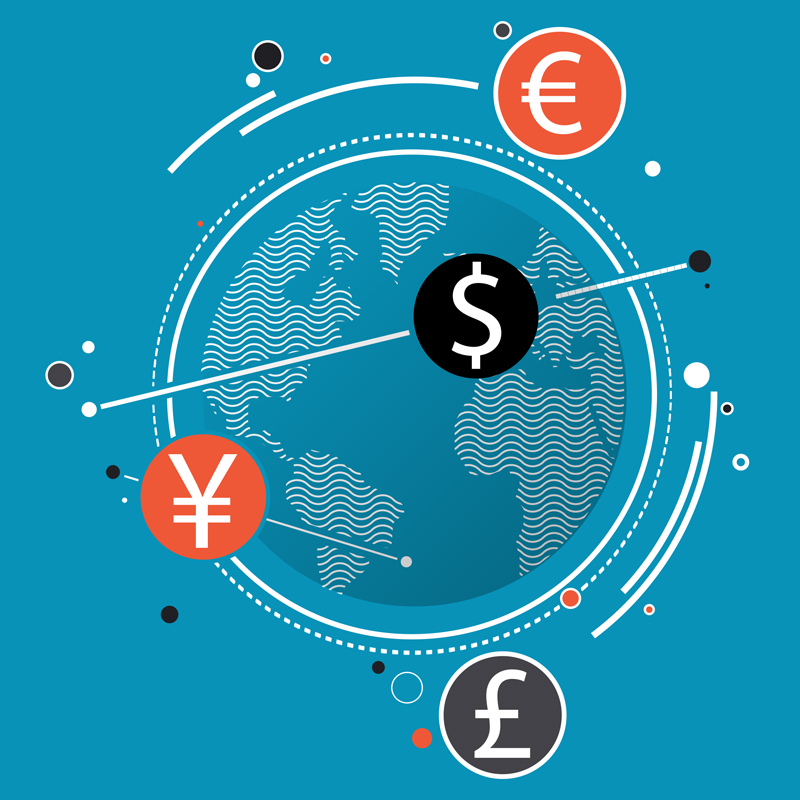
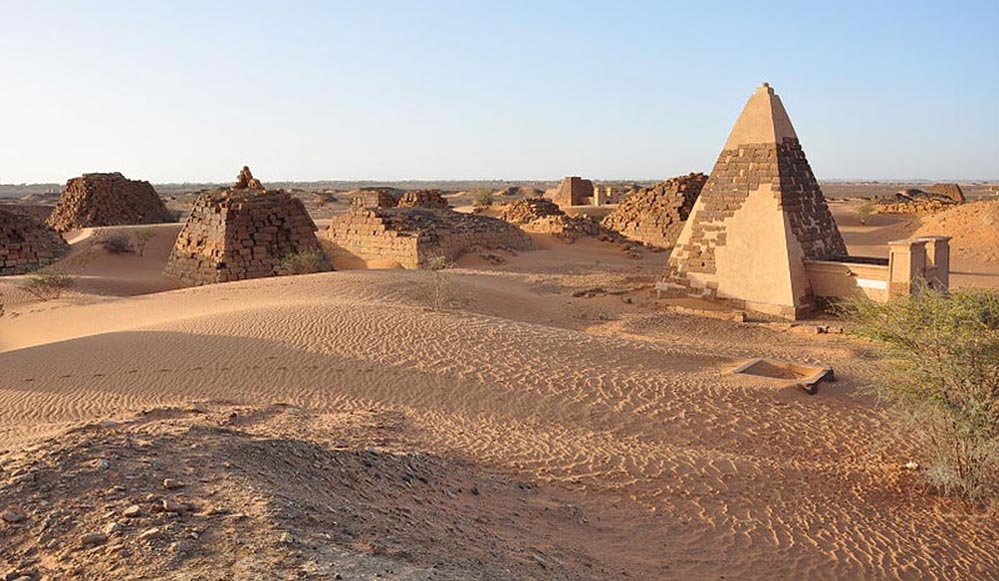
Economics Part 2
The beginnings of economic history started with the beginning of human history. The economy deals with the production, distribution, and the consumption of goods and services. The first age of the human race starts in the Paleolithic Era (or the Old Stone Age). This was the time when humans worked readily in bands or small kin groups. These bands communicated with each other in order to trade ideas. Some told stories. Others used tools, gathered foods, gathered skins plus other commodities. Flora and Fauna had massive differences back then, competition was unique and the climate was massively different than today. Human beings used various forms of technologies to adjust to the climate and to increase productivity. For example, there were handmade tools and objects like the cudgel, the club, sharpened stone, the chopper, a spear, the hand axe, the harpoon, etc. Many of these objects were used to hunt and gather animals. Humanity lived in caves, huts, and by rivers plus lakes. Some believed in an afterlife. There were burial rituals and ancestor worship too. Priests, shamans, and sanctuary locations did exist during this time period. The global population of humanity grew during this time was from 1 to 15 million people. Some scholars believe that during this period of prehistory, the world average GDP per capita was about $158 per annum (adjusted to 2013 dollars), and did not rise much until the Industrial Revolution.
This age lasted form ca. 500,000 B.C. to 10,000 B.C. Next, the Mesolithic Age started with the end of the last glacial period (which dealt with the Ice Age) over 10,000 years ago. Human beings domesticated plants and animals during this time period. There were many formations of settled communities in various times and places. The Mesolithic era saw tribes and bands flourishing. Economic activities existed in various villages. There were more complex tools like the harpoon, the bow and arrows, etc. Some of them fished, created baskets, and hunted plus gathered wild animals. Many of them used seeds of wild plants for domestic use and planting. Some used extensive hunting.
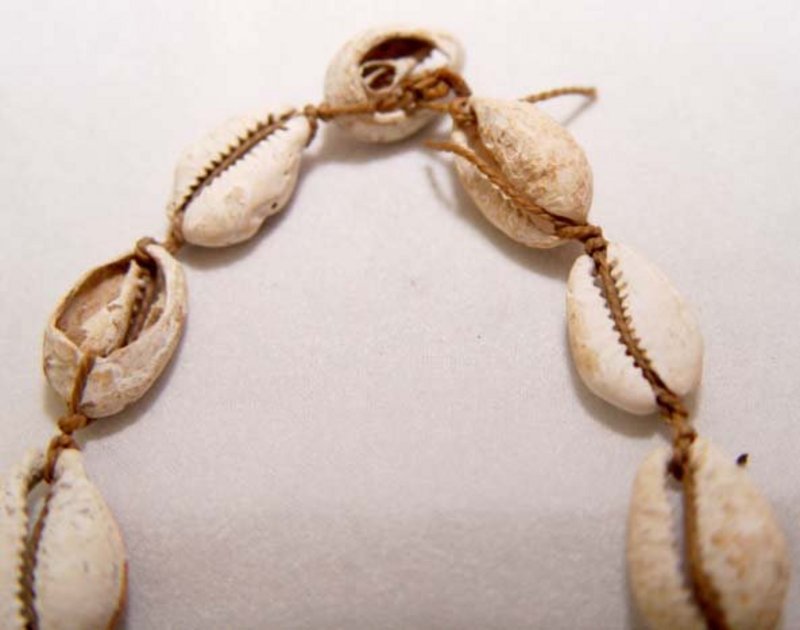
Neolithic Era
The Neolithic Era represented a revolutionary period of humanity and of technology including the economy. It lasted from ca. 10,000 B.C. to ca. 3,300 B.C. Tons of new inventions, structures, and technologies flourished during the Neolithic period. This was one of the greatest parts of human history. It was the start of the agricultural revolution in the world. People started to live in stationary locations. More animals were bred to be domesticated. People worked in farms. Settled communities and the first cities were created (as hunter gatherers started to settle down in locations permanently). There was agriculture in the modern sense in the Middle East as early as 8,000 B.C. People in India, Africa, the Americas, Southeast Asia, China, Europe, etc. grew villages and other civilizations. Jericho and Catal Huyuk (in Turkey) were some of the earliest modern cities and towns in human history.
Human beings used more medal tools. Mud brick houses flourished during this time including ladders and doorways. Cooking tools existed. Within each tribe the activity of individuals was differentiated to specific activities, and the characteristic of some of these activities were limited by the resources naturally present and available from within each tribe's territory, creating specializations of skill. By the "... division of labor and evolution of new crafts ..." (Cameron p. 25) Tribal units became naturally isolated through time from the over-all developments in skill and technique present within their neighboring environment. To utilize artifacts made by tribes specializing in areas of production not present to other tribes, exchange and trade became necessary. Scholars believed that cattle was used as currency back then. Trading in red ochre is attested in Swaziland, shell jewelry in the form of strung beads also dates back to this period, and had the basic attributes needed of commodity money. To organize production and to distribute goods and services among their populations, before market economies existed, people relied on tradition, top-down command, or community cooperation.
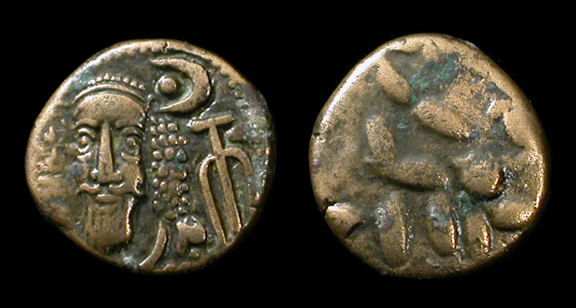
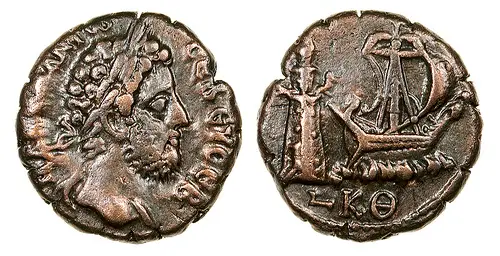
The Bronze and Iron Ages
The Bronze Age was one of the most important parts of world history. It was the era that had people using bronze worldwide, proto-writing existed, and urban civilization has grown into the next level. Back then, many people used smelting cooper and alloying with tin, arsenic, or other metals to form bronze. Bronze was more durable than many other metals, so the Bronze Age lasted for a long time with great technological proficiency. The era of the Bronze is different from region to region. In Ancient Egypt and the Middle East, it lasted from ca. 3,300 B.C. to 1,200 B.C. In South Asia, it lasted from ca. 3,000 B.C. to 1,200 B.C. In Europe, it lasted from ca. 3,200 B.C. to 600 B.C. In East Asia, it lasted from ca. 2,000 B.C. to 300 B.C. In sub-Saharan Africa (in places like Nubia and West Africa), it lasted from ca. 2,300 B.C. to 400 B.C. In the Americas, it lasted from ca. 2,100 B.C. to 1,000 B.C. Trade occurred among the ancient civilizations of Egypt, Mesopotamia, and the Indus Valley Civilization.
During this time, the city states of Sumer formed a trade and market economy. It was based on the commodity money of the shekel which was a certain weight measure of barley. Using the shekel as a unit of weight and currency was first recorded in circa 3,000 B.C. A specific usage of weight included barley and equivalent amounts of silver, bronze, copper, etc. The Babylonians and their city state neighbors later developed the earliest system of prices using a metric of various commodities that was fixed in a legal code. The early law codes from Sumer could be considered the first written financial law. It had many parts still in use in the current price system today like the codified quantities of money for business deals (interest rates), fines for wrongdoing, inheritance rules, law concerning how private property is to be taxed or divided, etc. The Babylonian law was historic. Back then, many places in the Bronze Age had temples using creditors at interest. It started with Sumer during the third millennium B.C. By charging interest and ground rent on their own assets and property, temples helped legitimize the idea of interest bearing debt and profit seeking in general. Later, while the temples no longer included the handicraft workshops which characterized third millennium Mesopotamia, in their embassy functions they legitimized profit seeking trade, as well as by being a major beneficiary. This period had places using commodity money or objects with value in themselves as their value used as money.
The Babylonians and their neighboring city states later formed the earliest system of economics as we think of it today in terms of rules on debt, legal contracts, and law codes relating to business practices and private property. The Code of Hammurabi, the best preserved ancient law code, was created ca. 1760 B.C. in ancient Babylon. It was enacted by the sixth Babylonian king, Hammurabi. Earlier collections of laws include the code of Ur-Nammu, king of Ur (ca. 2050 BC), the Code of Eshnunna (ca. 1930 BCE) and the code of Lipit-Ishtar of Isin (ca. 1870 BC). These law codes formalized the role of money in civil society. They set amounts of interest on debt... fines for 'wrongdoing'... and compensation in money for various infractions of formalized law. Ancient China, Africa, and India used cowry shells as money. Metals were used for money too back then. The use of gold as proto-money has been traced back to the fourth millennium BC. when the Egyptians used gold bars of a set weight as a medium of exchange, as had been done earlier in Mesopotamia with silver bars. There was money used by the Philistine people too.
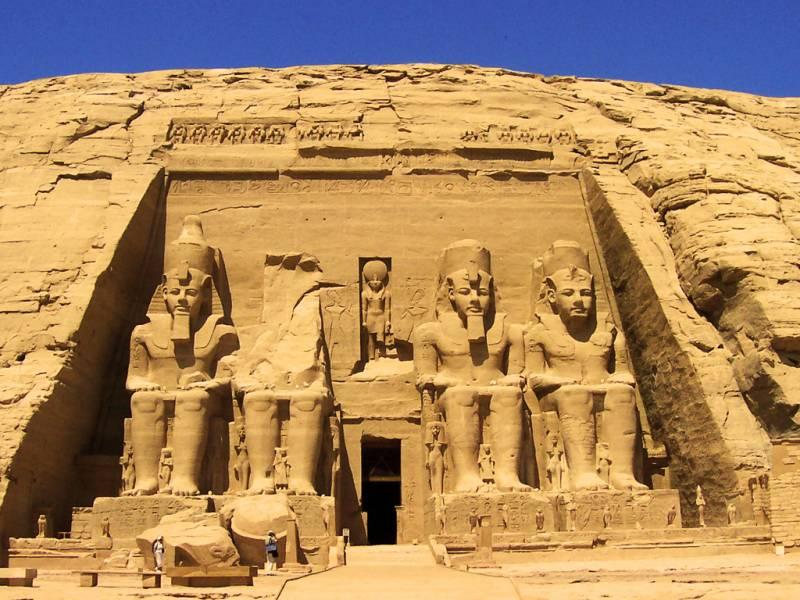
The Iron Age lasted from ca. 1,200 B.C. to 600 B.C. depending on the region. From about 1,000 B.C. and later, many forms of money took the shape of small knives and spades made of bronze in China during the Zhou dynasty. They had cast bronze replicas of cowrie shells in use before this. The first manufactured coins seem to have taken place separately in India, China, and in cities around the Aegean Sea between 700 and 500 BC. While these Aegean coins were stamped (heated and hammered with insignia), the Indian coins (from the Ganges river valley) were punched metal disks, and Chinese coins (first developed in the Great Plain) were cast bronze with holes in the center to be strung together. The different forms and metallurgical process implies a separate development. The first ruler in the Mediterranean known to have officially set standards of weight and money was Pheidon. Minting occurred in the latter parts of the 7th century among the cities of Grecian Asia Minor, spreading to Aegean parts of the Greek islands and the south of Italy by 500 B.C. The first stamped money (having the mark of some authority in the form of a picture or words) can be seen in the Bibliothèque Nationale of Paris.
It is an electrum stater of a turtle coin, coined at Aegina island. This coin dates about 700 BC. Other coins made of electrum (a naturally occurring alloy of silver and gold) were manufactured on a larger scale about 650 BCE in Lydia (on the coast of what is now Turkey). Similar coinage was adopted and manufactured to their own standards in nearby cities of Ionia, including Mytilene and Phokaia (using coins of electrum) and Aegina (using silver) during the 6th century BC. and soon became adopted in mainland Greece itself, and the Persian Empire (after it incorporated Lydia in 547 BC). The use and export of silver coinage, along with soldiers paid in coins, contributed to the Athenian Empire's 5th century BC, dominance of the region. The silver used was mined in southern Attica at Laurium and Thorikos by a huge workforce of slave labor. A major silver vein discovery at Laurium in 483 B.C. led to the huge expansion of the Athenian military fleet.

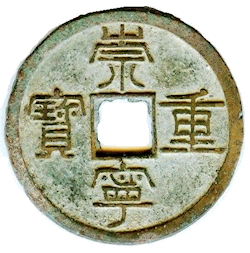
Classical Antiquity
The Classical Age of world history lasted from 500 B.C. to 500 A.D. It was after the Iron Age. The Classical Age related to the further development of world empires, the expansion of trade, and the further complex growth of human interactions. Back then, India and China had the biggest economies in the world at that time. Each had more than half of the size of the world’s economy. They had high GDP, but they didn’t have significantly higher GDP per capita. Each had major population centers too. Commercial changes grew as result of the actions of Alexander the Great too. He facilitated multi-national trade. Julius Caesar of ancient Rome also conquered France and Britain. By the time of the Roman Empire, Egypt was the wealthiest of all places within the Roman Empire. The merchants of Rome acquired produce from Persia via Egypt by the port of Berenince and subsequently the Nile. Ancient Nubia during the classical period had its ideas and technologies travel in the rest of Africa, Europe, Asia, etc. Nubia traded with Chad, Libya, Egypt, China, India, and the Arabian Peninsula too. The Bantu migration during this period continued. In ancient China, there was the Warring States era from the 5th century to 3rd century B.C. As the feudal system collapsed, most legislative power transferred from the nobility to local kings. Increased trade during the Warring States period produced a stronger merchant class. The new kings in ancient China established an elaborate bureaucracy, using it to wage wars, build large temples, and enact public-works projects. This meritocratic system rewarded talent over birthright. Greater use of iron tools revolutionized agriculture and led to a large population increase during this period.
In 221 B.C., the king of the Qin declared himself the First Emperor, uniting China into a single empire. The Qin Dyansty saw its various state walls into the Great Wall, and its various peoples and traditions into a single system of government. The Qin emperor unified standards of writing, weight measurement, and wheel length. It ended old currencies that varied among states. Trade was easier to execute. It had heavy taxation of salt and iron manufactures. Many Chinese people were forcibly migrated to new territories in the south and west. Although their initial implementation led to its overthrow in 206 B.C., the Qin's institutions survived. During the Han Dynasty (from 3rd century B.C. to 3rd century A.D.), China became a strong, unified, and centralized empire of self-sufficient farmers and artisans, with limited local autonomy. The Han dynasty in China was a Golden Age. There was rapid growth. Its population reached 58 million people. There was the wheelbarrow, paper, and a seismograph which was invented during this period.
According to Herodotus, and most modern scholars, the Lydians were the first people to introduce the use of gold and silver coin. It is thought that these first stamped coins were minted around 650–600 BC. A stater coin was made in the stater (trite) denomination. To complement the stater, fractions were made: the trite (third), the hekte (sixth), and so forth in lower denominations. The first economist (at least from within opinion generated by the evidence of extant writings) is considered to be Hesiod, by the fact of his having written on the fundamental subject of the scarcity of resources, in Works and Days. Indian thinker Chanakya wrote Arthshastra, science of economics in contemporary India in 4th century BC. Greek and Roman thinkers made various economic observations, especially Aristotle and Xenophon. Many other Greek writings show understanding of sophisticated economic concepts. For instance, a form of Gresham’s Law is presented in Aristophanes’ Frogs. Bryson of Heraclea was a neo-platonic who is cited as having heavily influenced early Muslim economic scholarship.

The Middle Ages
During the Middle Age, the world economy slowly expanded with the increase of population and trade. There was the Silk Road that was used for trading from Europe, Central Asia, and to China. The Axumite Kingdom of Ethiopia and Eritrea had a powerful navy. They established trade with the Byzantine Empire and India. Islamic areas by the Middle East expanded trade, literacy, and centralized states. By 1324, Mansa Musa, the king of Mali, made a historically famous Hajj (pilgrimage) to Mecca. There was an enormous group organized to undertake the Hajj with the king. It included "60,000 men, including 1200 servants" and records show that Mansa Musa gave out so much gold in Egypt, that its economy became depressed.
Between 1000 and 1500, the forests of West Africa also became part of trade networks, particularly under the reigns of the Yoruba kings. Ifé was a vital trade town, along the route from the tropical forests to Djenné, a major trade center in Sudan, near other large trade cities such as Timbuktu and Gao. Ifé's location also placed it near Benin and the Atlantic Ocean. The Yoruba civilization was supported by cities surrounded by farmed land, but extensive trade development made it wealthy. The stone city of Great Zimbabwe, founded around 1100, was the center of the Shona kingdom until around 1400. In the Tang dynasty (in ancient China), there was another Golden Age in China. By 630, the Tang had conquered the powerful Gokturk Khagnate, preventing threats to China's borders for more than a century. A series of strong and efficient rulers, beginning with the founder and including a woman, expanded the Tang Empire to the point that it rivaled the later Yuan, Ming and Qing.


The Silk Road had a great deal to do with the economic trade in the ancient world.
The Tang was a period of rapid economic growth and prosperity, seeing the beginnings of woodblock printing. Tang rulers issued large amounts of currency to facilitate trade and distributed land under the equal-field system. The population recovered to and then reached an estimated 80 million human beings. The Chinese Song period (10th–13th century A.D.) brought additional economic reforms. Paper money, the compass, and other technological advances facilitated communication on a large scale and the widespread circulation of books during the Song period. The state's control of the economy diminished, allowing private merchants to prosper and a large increase in investment and profit. Despite disruptions during the Mongol conquest of 1279, the 2nd plague epidemic in the 14th century, and the large-scale rebellions that followed it, China's population was buoyed by the Columbian Exchange and increased greatly under the Ming (14th–17th centuries). The Ming dynasty of China saw cash crops grown and it was founded by Zhu Yuanzhang. Many state industries were privatized. The Ming Dynasty was a very important era of Chinese history.
During the early part of the Middle East, Europe was in chaos because of wars, the end of the Western Roman Empire, and other problems. By the later medieval period, rich trading cities in Italy developed. They created the first modern accounting and finance systems in Europe. The first banknotes were used in the Tang dynasty China in the ninth century A.D. It expanded use during the Song dynasty. By the first millennium A.D., there were improvements in technique and technology in the world. Monasteries developed. There were centers of the collection of knowledge involving agriculture and forestry. Irrigation improved. There were trade among Europeans, Africans, and Asians. Those in the Americas traded with each other too. Economies in Oceania, Australia, and the rest of the world existed. Land use increased and population increased. Large landowners had significant control over both their land and its laborers, who were peasants or serfs. More iron smelting caused more tools to be developed for developing society.
Watermills and windmills spread in the world. There was the Great Famine from 1315 to 1317. It weakened populations in Europe and parts of Asia too. From the 8th century to the 12th century, there were the Vikings using long distance navigation to travel into Europe, America, parts of Africa, and the Middle East. There was the long-ship and the astrolabe used by the Vikings and others for navigation. Guilds and merchant capitalism was formed. This was about merchant houses, backed by financiers acting as intermediaries between simple commodity producers. This system continued until it was supplanted by industrial capitalism in the 18th Century. City states like in Italy developed. Genoa and Venice created large wealth. In the North Sea and the Baltic Sea, the Hanseatic League trade monopoly grew trade along the 2 seas. Lubeck was the city leader of the Hanseatic League. In the late 1400’s, the economies of Europe (especially in France) did grow and recuperated from the economic catastrophes and bad harvest plus famines including wars.
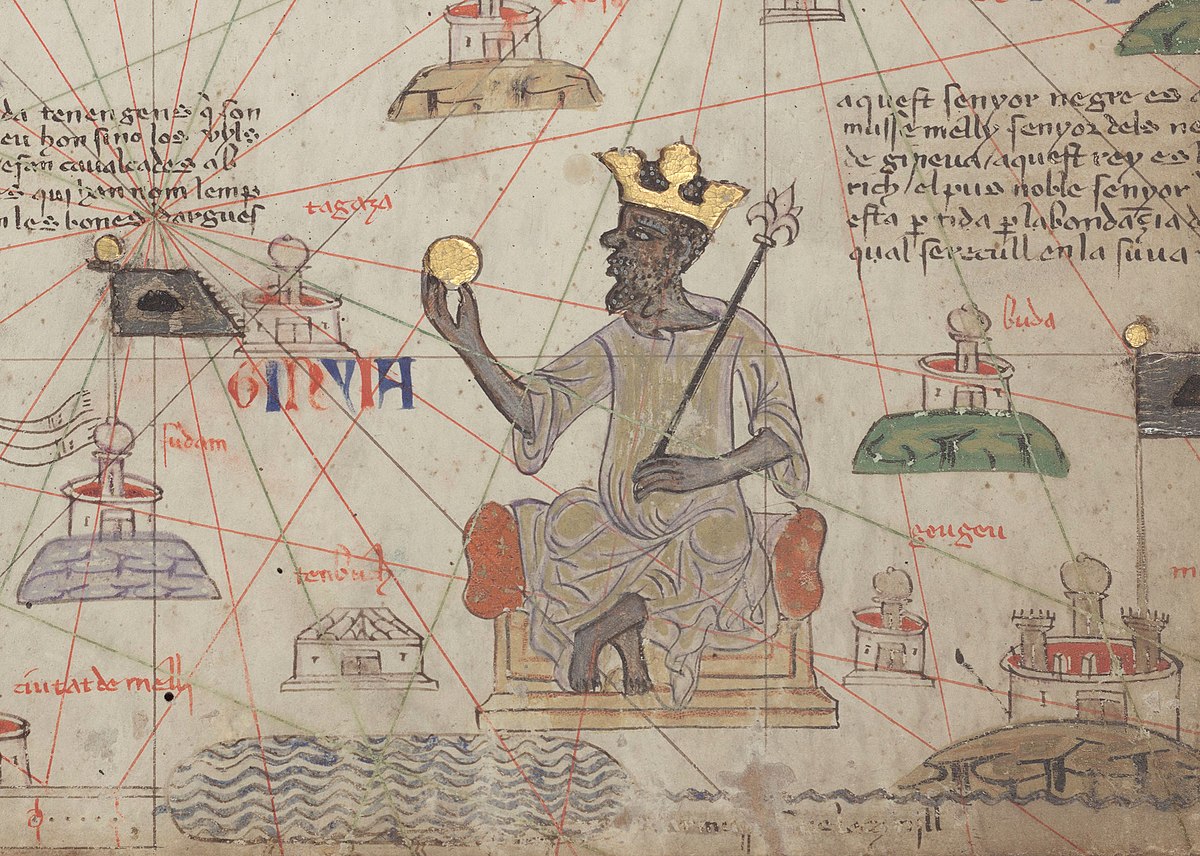

By 1500
By 1500, the world has changed. This era was the start of the massive international slave trade. It was during the late 1400’s when Portugal began the modern International slave trade involving the oppression of black African people. There were early European colonists in North Africa like the ancient Greeks. The modern economy as we know it today revolved around the brutal oppression of black people and the genocide of the indigenous peoples of the Americas literally. Portuguese prince Henry the Navigator made it very clear that he wanted to travel into Africa as a means to get resources and try to convert as many African people to his version of Christianity (in the midst of the Ottoman Empire, which was mostly Muslim). Not all Christians are responsible for the Maafa. It is that evil people purposely perverted the essence of real Christianity as an excuse for them to commit evil. It’s like not all Muslims are responsible for the Arabic slave trade (which was evil and unjust), but some people claiming to be Muslims are responsible for it. The Portuguese refused to sell the African people guns, but they sold Africans Indian cloth and European manufactured goods. Europe itself used imperialism and massive economic exploitation as a means for that continent to grow their various brutal empires in the world. As we know, after 1500, the world would change forever.
By Timothy
No comments:
Post a Comment